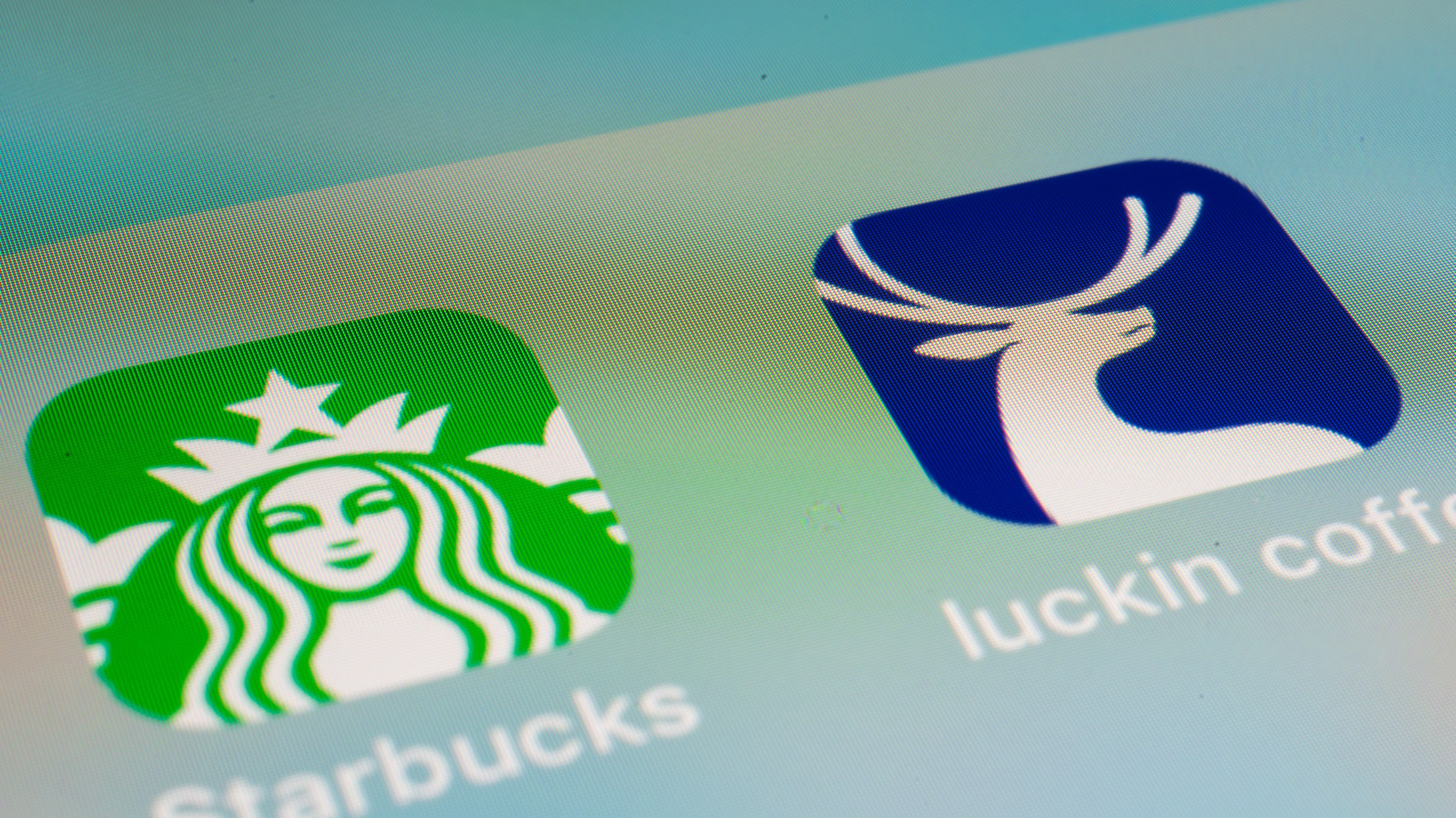
David and Goliath are fighting for China’s coffee market. Luckin Coffee, the modern-day David very openly tackling Starbucks’ dominance in China, has announced plans to open 2,500 new outlets in 2019.
“Luckin aims to become China’s biggest coffee chain brand by the year end,” said CEO Qian Zhiya at a press briefing in Beijing in early January, “totally surpassing Starbucks by cups of coffee sold and number of shops”.
Coffee drinking in China is still a relatively new habit, but one that grew after Starbucks opened their first store in Beijing in 1999. Since then they’ve expanded to sit comfortably on around 80% of the market, at Euromonitor’s estimate.
Although a significantly more recent presence than Starbucks, plucky start-up Luckin has heavy backing from a Singaporean wealth fund, and raised $200m in a recent investment round up. It’s still a loss-making company, but is openly pursuing growth over profit in the short term. At the same press briefing, chief marketing officer Yang Fei was confident – asserting that Luckin’s investors, far from being concerned, in fact believe “we are being too conservative”.
Luckin’s expansion has been spectacular and rapid. It was only founded at the end of 2017, and in its first year it had opened 1,700 outlets (as reported by The Financial Times). The boom of Luckin outposts in 21 cities through China is partly down to their business model: as well as cafés and small booths for customer pick-up, many of Luckin’s stores are delivery-only kitchens.
Coffee at the push of a button
Delivery is Luckin’s speciality, and its systems have helped it in the race against Starbucks. The company claims that an order can be delivered within 30 minutes; their customer-less delivery kitchens are strategically vital for covering ground.
Starbucks’ business model in China has historically been focused on coffee shops, a space to sit down and stay. That policy did well: the largest Starbucks store in the world is the 30,000 square foot behemoth in Shanghai. Now, though, online retail and rapid delivery systems have cut in front of long queues at physical stores to attract customers elsewhere.
They are scrambling to catch up. Starbucks partnered with Alibaba in August to introduce delivery from their stores in Shanghai and Beijing – according to Forbes, the company intends to deliver from 2,000 of its stores by the end of the financial year 2019.
Coffee in the tech bubble
In some ways, the war between Starbucks and Luckin is a proxy for the clash between China’s tech titans. In Luckin’s corner is Tencent, which it has partnered with for marketing on its WeChat platform and for delivery through Tencent-owned Meituan Dianping. Alibaba is Tencent’s main rival, and Starbucks is using its company Ele.me for deliveries.
The two companies are fighting a very modern war for consumers’ attention via their online presence, and the ease with which they can deliver their product. For Luckin in particular, online payments are vital. Customers can either use WeChat Pay (owned by Tencent), or pay through Luckin’s own app.
China is no exception to the trend of cash rapidly falling by the wayside, knocked off by mobile payments. However, China’s central bank is attempting to crack down on retailers who refuse cash for payment: it’s a move that would limit Tencent and other tech companies from dominating payments. The People’s Bank of China released a statement in July 2018; formally clarifying that refusing cash is illegal.
Coffee competition
Competing with Starbucks is no mean feat: the Seattle-based coffee company is seen as an upmarket brand in China, and holds a lot of consumer attention. It’s also not exactly reticent. As Belinda Wong, CEO of Starbucks China said in an interview with CNBC, they open a new store in China every fifteen hours and serve five million customers a week.
Starbucks has also opened a branch of its select Reserve Roastery outlets in Shanghai, a 30,000 square foot demonstration of their investment in Chinese coffee drinkers.
The race between the two major players in China’s coffee is driving change in the way that the still-young market operates. It’s also a case study for wider change: slashed prices that attract young, online-based consumers, and rapid delivery systems that cater for an ever-connected world. It remains to be seen who will ultimately win over Chinese coffee drinkers, but the competition is pushing for improvements and changes to the way that China drinks, orders, and embraces coffee.
Frances Ball
